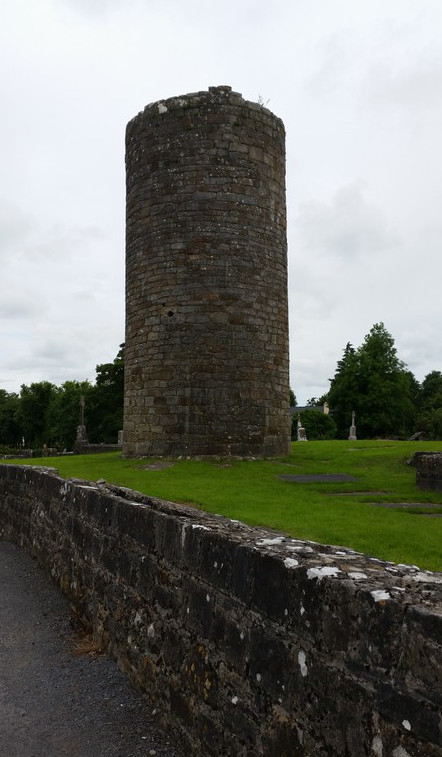
01 Jun Balla, County Mayo
Balla is a village on the Castlebar-Claremorris road. A broken round tower and a medieval alter in a shamefully neglected graveyard mark the site of the monastery founded in the 7th century, by St Cronan, alias Mo-Chua. To the west of the graveyard are Tobar Mhuire, alias the Blessed Well and the ruins of the 17th century shelter for the blind and lame who resorted to the well on Patron Day (15th August).
To the South is Mayo from which the county takes its name. Now a mere hamlet it occupies part of the sight of a famous early monastery. When the Irish party was defeated at the Synod of Whitby, Bishop Colman of Lindisfarne withdrew from the English mission to Iona, and the thence to Ireland. His adherents included 30 English monks who followed him to Inishbofin, where he set up a monastery. Disputes having arisen between the Irish and English brethren, Coleman transferred the latter to the new monastery at Mayo, therefore called Mayo of the English. The monastery which won the praise of Bede, retained its English character for a considerable period. (One of Alcuin’s letters 773-86 is addressed to Bishop Leuthfriht of the monastery, a second, 792-800, is addressed to the fathers of the monastery; the best known name connected with the place is that of St Gerald, an Englishman.) In time the monastery became a college of secular canons which, about 1370, adopted the Augustine Rule and survived until the Dissolution. All the remains today are fragments of ecclesiastical buildings and a trace of a greater circular enclosing wall or vallum.
Balla is a real hidden gem and is worth a visit on your tours of Ireland.

